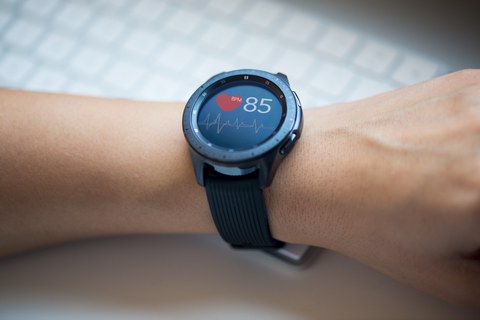Mar 24, 2025
Potential of digital technologies for health research: Smartwatch data reveals differences in sufferers of long COVID even before infection
Does long COVID mainly affect people who are less fit? A study conducted in conjunction with Prof. Dirk Brockmann, Director of the Center Synergy of Systems (SynoSys) at TUD Dresden University of Technology discovered that people with long-lasting symptoms following a COVID-19 infection already had a lower level of activity and a higher resting heart rate before they fell ill. The research is based on data collected by the Coronavirus App (CDA), which was developed under the direction of Prof. Brockmann during his time at the Robert Koch Institute (RKI). The study results were published in the peer-reviewed open-access medical journal npj Digital Medicine.
From April 2020 to December 2022, more than 120,000 people in Germany aided this important research by providing the Coronavirus App with crucial data through the daily use of their smartwatches and fitness trackers. The researchers analyzed this data to identify differences in the physiological characteristics of individuals with and without long COVID.
“Even in the three weeks prior to infection, people who later reported long-lasting fatigue or shortness of breath were significantly less active and had a resting heart rate that was 2.37 beats per minute higher,” explains lead author Katharina Ledebur, who was part of Prof. Brockmann's team during the data collection.
The results of the study indicate that lingering symptoms could be related to lower fitness or existing health problems. However, Ledebur also provides the following caveat: “This does not mean that these factors are sufficient to cause long COVID on their own. In fact, those affected should be monitored particularly closely and given the necessary support.”
The high data quality of the app made it possible for the first time to precisely analyze individual changes over the entire course of the infection. While previous studies on the health status and behavior of long COVID patients prior to their infection relied on subjective survey data, the data analysis of the coronavirus app made it possible to compare and analyze objective physiological data for the first time.
At the same time, the instigators of the study point out that smartwatch data is not representative of the population as a whole, as younger and older people were underrepresented. Even so, citizen science projects of this kind open up new possibilities because the cohorts are comparatively large.
The study is part of the recently launched SynoSys.PC research project. As part of this research project, scientists are working on the integration of digital data sources into personalized medicine. The TUD project will be coordinated by SynoSys and will focus on key issues in digital health care and risk detection. The current results on long COVID provide important insights into how wearable data systems can contribute to the early identification of patient groups at risk. The study was conducted in collaboration with the Complexity Science Hub (CSH), where Ledebur is currently employed as a doctoral student.
Contact:
Prof. Dirk Brockmann
Director of SynoSys at TUD Dresden University of Technology
Email:

